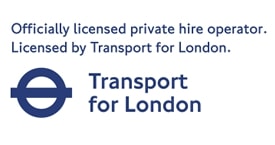Residents near Gatwick airport and London City airports are being asked to comment on changes to the way planes are managed in the skies above the South East.
The National Air Traffic Control Service (NATS) wants to create an airspace network with planes flying on specific routes, similar to a motorway.
It said the changes were needed to ensure safety levels and the new system would mean less noise for most people.
But people under new flight-paths could experience more air traffic.
NATS said the changes would reduce the amount of stacking - where aircraft circle while they wait for a landing slot - that took place, put more routes over the sea and cut CO2 emissions.
Planes would climb higher on take-off and fly at a greater altitude for longer during landing.
'Noise footprint'
Juliet Kennedy, operations director at NATS' Swanwick headquarters in Hampshire, said: "The whole of the South East of England, pretty much, is already over flown by aircraft.
"What we're trying to do is to work out the best possible route structure which suits everybody, works best for the people who are living underneath the areas where the aircraft fly but also for the airlines who are flying them and enables us to meet the demands that are placed on us by all the people who want to fly."
She added: "The airspace above London is the most complex in the world and, as traffic levels increase, change is necessary to ensure safety and service levels."
Jane Vogt, former chair of Dormansland Parish Council in Surrey, said: "There's a certain amount of concentration of aircraft already and that in itself raises several questions, the impact on health, the moral issue and the environmental impact.
The airspace above London and the South East is the most complex in the world, according to NATS
"We are surrounded here by an area of outstanding natural beauty (AONB), to the south of the area is the South Downs. There is already visual impact from aviation and also noise and a lot of businesses within the AONB rely on tranquillity for their business."
Gatwick Airport said it was considering a scheme called "rotating respite", which would see flight-path routes switched on and off.
Tom Denton, head of corporate responsibility at the airport, added: "This project gives us an opportunity to further reduce the number of people affected by noise, as well as focus on further reducing CO2 emissions and air quality impacts.
"Therefore this is an important time for local people and those who live within our flight paths, who now have a once in a lifetime opportunity to give their feedback and influence the future of our airspace."
The consultation on the plans for airspace routes to and from Gatwick and London City airports runs from Tuesday until 21 January 2014.
Proposals for Heathrow Airport and other London airports will then follow.
BBC




